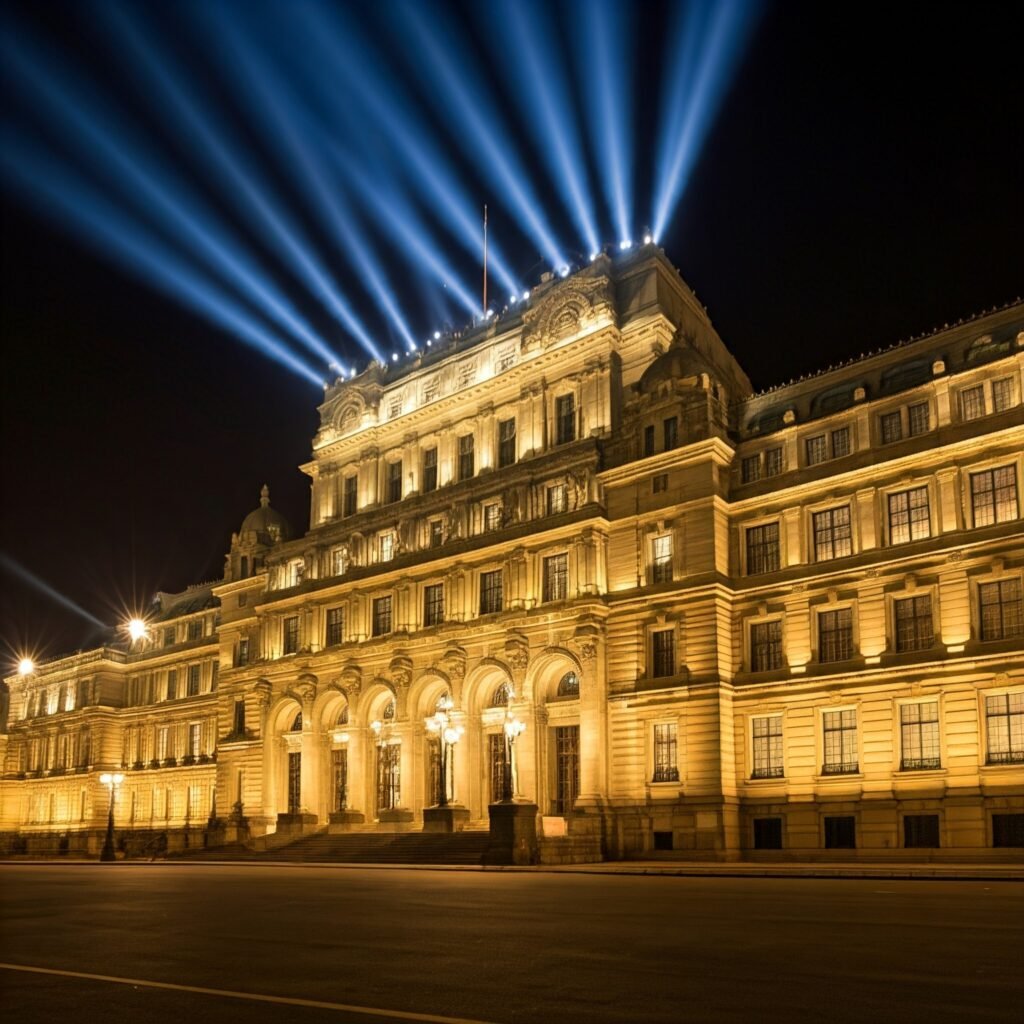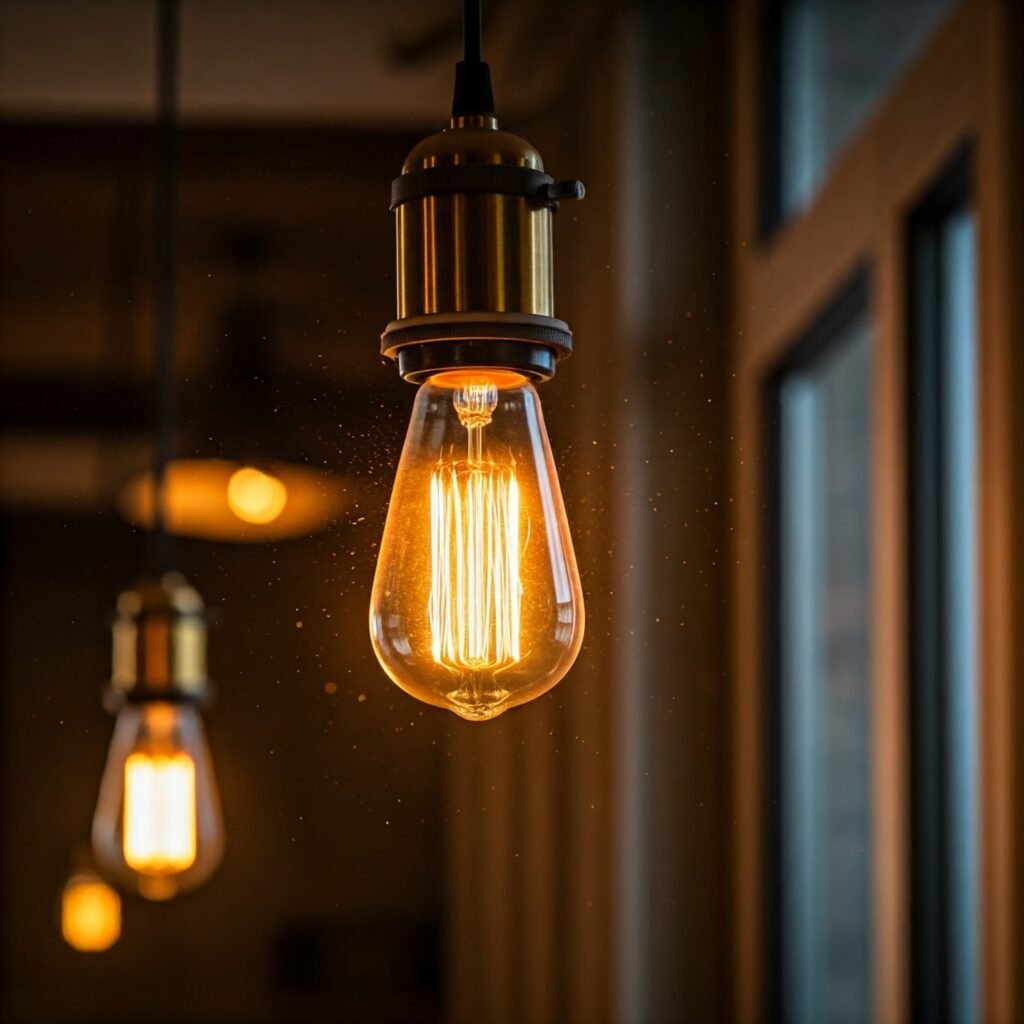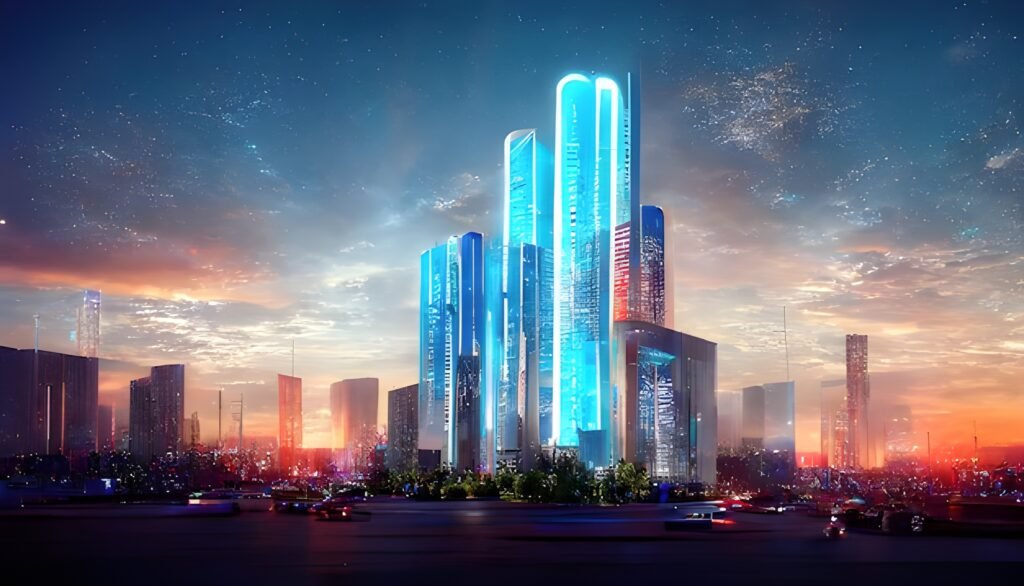Facade Lighting Enhancing Building Design highlighting architectural features and creating visual interest. Learn effective lighting techniques and their impact on your building’s appearance. Enhance your building’s exterior with expert insights and practical tips.
Table of Contents
Introduction to Facade Lighting
Facade lighting is a powerful tool in building design that goes beyond mere illumination. It transforms the visual perception of a building, highlighting architectural features and contributing to the overall aesthetic appeal. Proper facade lighting can enhance the beauty of a building, influence its ambiance, and even affect how it is perceived by the public. In this comprehensive guide, we will explore the science behind facade lighting, examining how various types of lights impact your building’s appearance and the principles of effective facade lighting design.
Understanding Facade Lighting
Facade lighting enhancing building design involves strategically placing lighting fixtures to illuminate a building’s exterior. Properly designed facade lighting highlights architectural details and contributes to the overall aesthetic appeal. This guide will help you understand how different lighting techniques can improve your building’s design.
Types of Facade Lighting

Types of Facade Lighting
Different types of lighting fixtures and techniques are used to achieve various effects in facade lighting. Understanding these types helps in making informed decisions about building front design.
1. Floodlights

Floodlights are powerful fixtures designed to illuminate large areas, making them ideal for facade lighting enhancing building design. They highlight substantial sections of a building’s facade, creating dramatic effects that draw attention.
Advantages:
- High-intensity and broad coverage
- Ideal for large facades and open spaces
- Can be used to highlight architectural features
Disadvantages:
- Can cause light pollution if not properly shielded
- May create strong shadows if not evenly distributed
2. Spotlights

Spotlights focus light into a narrow beam, allowing for precise illumination of specific areas. This type of lighting is excellent for facade lighting enhancing building design, as it accentuates particular architectural details or artworks.
Advantages:
- Precise and targeted illumination
- Ideal for emphasizing architectural details
- Flexible in terms of positioning and angle
Disadvantages:
- May create harsh shadows if not carefully positioned
- Can be less effective for illuminating large areas
3. Wall Washers

Wall washers are designed to provide even illumination across a wall’s surface. This technique is useful in facade lighting enhancing building design as it reveals the texture and details of the facade without creating strong shadows.
Advantages:
- Even uniform light distribution
- Reduces shadows and highlights texture
- Suitable for creating a smooth, continuous effect
Disadvantages:
- Less effective for highlighting specific features
- May require multiple fixtures to cover larger areas
4. Backlighting

Backlighting involves placing light sources behind objects to create a silhouette effect. This technique adds depth and dimension to a building’s facade, contributing to facade lighting enhancing building design by making it appear more dynamic.
Advantages:
- Creates depth and visual interest
- Highlights the shape and outline of objects
- Can be used to create striking visual effects
Disadvantages:
- May require precise positioning to achieve desired effect
- Can be less effective for general illumination
The Science of Light and Its Impact on Building Appearance
Understanding the science behind light behavior is essential for effective facade lighting design. The way light interacts with surfaces can greatly impact the visual appearance of a building.
1. Color Temperature

Color temperature, measured in Kelvin (K), influences the mood and perception of lighting. For facade lighting enhancing building design, choosing the right color temperature is essential:
- Warm White (2700K – 3000K): Provides a cozy, inviting glow that is often used in residential buildings and historic structures. It creates a soft and warm atmosphere.
- Neutral White (4000K): Offers a balanced, natural light ideal for modern buildings and commercial spaces. It provides a clear and crisp appearance.
- Cool White (5000K – 6500K): Delivers a bright, crisp light suitable for high-tech and contemporary designs. It enhances details and provides high visibility.
2. Light Intensity

Light intensity affects how brightly a building’s facade is illuminated. For facade lighting enhancing building design, balance between high and low intensity is crucial:
Factors to Consider:
- Brightness Levels: Choose appropriate brightness levels based on the building’s purpose and surroundings.
- Balancing Intensity: Ensure a balance between bright and soft areas to avoid overwhelming contrasts.
3. Light Angle and Shadows

The angle of light impacts shadow creation, which affects the facade’s appearance. In facade lighting enhancing building design, understanding light angles helps in achieving the desired visual effects:
Effects of Light Angle:
- Sharp Angles: Create strong, defined shadows that highlight texture and depth.
- Shallow Angles: Produce softer shadows that provide more even and gentle illumination.
Principles of Effective Facade Lighting Design
Applying principles of facade lighting enhancing building design ensures that lighting is used effectively to highlight features and create visual interest.
1. Highlighting Architectural Features
Effective facade lighting enhancing building design focuses on accentuating unique architectural elements. Use lighting to draw attention to columns, arches, and other features to enhance the building’s design.
Techniques:
- Use Spotlights: To illuminate specific architectural details.
- Combine Lighting Types: To create a layered effect that highlights both major and minor features.
2. Creating Visual Interest
Incorporate various lighting techniques to create visual interest. Combining floodlights, spotlights, and wall washers in facade lighting enhancing building design can produce dynamic effects and highlight different aspects of the facade.
Suggestions:
- Layer Lighting Effects: Combine different types of lights to create depth and contrast.
- Experiment with Color: Use color-changing lights to create varying effects and highlight different features.
3. Ensuring Uniformity
Ensure uniform illumination to avoid harsh shadows or bright spots. Even distribution of light is essential for facade lighting enhancing building design and maintaining a professional appearance.
Tips:
- Adjust Fixtures: To ensure even coverage and minimize shadows.
- Use Wall Washers: For uniform light distribution across large surfaces.
4. Energy Efficiency
Choose energy-efficient lighting options like LEDs for facade lighting enhancing building design. LEDs reduce power consumption and contribute to environmental sustainability while providing high-quality illumination.
Advantages of LEDs:
- Low Power Consumption: Reduces energy costs and environmental impact.
- Long Lifespan: Requires less frequent replacement and maintenance.
5. Integrating with Surroundings
Ensure that the facade lighting complements the surrounding environment. Effective facade lighting enhancing building design integrates seamlessly with the urban or natural setting to maintain visual harmony.
Considerations:
- Avoid Overly Bright Lights: That could disrupt the visual harmony of the area.
- Choose Fixtures Wisely: To match the building’s architectural style and surrounding environment.
Case Studies and Examples
1. Historic Building Lighting

Historic buildings use facade lighting enhancing building design to highlight architectural details while preserving historical character. For example, the Paris Opera House utilizes warm lights to enhance its classic appearance.
2. Modern Skyscrapers

Modern skyscrapers like the Burj Khalifa employ dynamic lighting to create impressive effects. Facade lighting enhancing building design in such structures includes color-changing LEDs to highlight their sleek designs.
3. Residential Projects

Residential projects often use warm white LEDs for facade lighting enhancing building design to create a welcoming atmosphere. This approach enhances curb appeal and creates a cozy environment.
Conclusion
Facade lighting is an essential component of building design that can transform the appearance and perception of a structure. By understanding the science of light and employing effective lighting techniques, you can enhance your building’s elevation design and create a memorable visual impact. Whether you’re working on a residential, commercial, or institutional project, thoughtful facade lighting design can showcase your building’s architectural beauty and contribute to its overall success.
Effective facade lighting goes beyond mere illumination; it involves a strategic approach to highlighting features, creating visual interest, and integrating with the surrounding environment. With the right lighting design, your building can stand out and make a lasting impression on all who see it.




